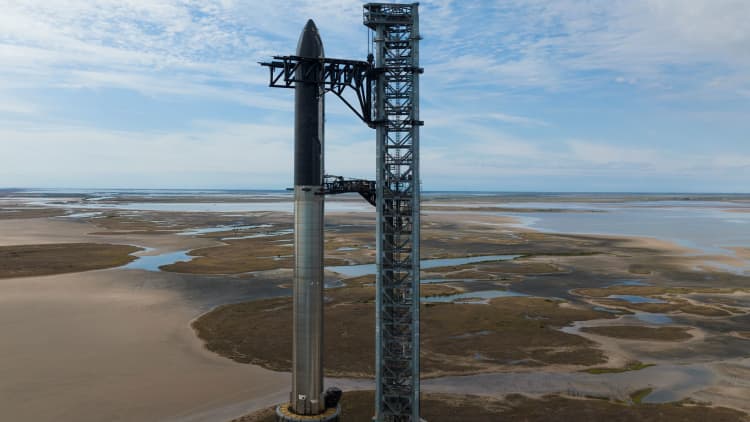
Satellite image shows an overview of the International Space Station and the Boeing Starliner spacecraft on June 7, 2024.
Maxa Technologies | Reuters
NASA will use a spacecraft from Elon Musk’s SpaceX to guide the destruction of the International Space Station later this decade, the agency announced on Wednesday.
NASA awarded SpaceX an $843 million contract to build the so-called “American deorbit vehicle.” The spacecraft is designed to guide the football field-sized research laboratory back into Earth’s atmosphere after its retirement in 2030.
The launch vehicle built by SpaceX will effectively destroy the International Space Station by propelling it from orbit back into the atmosphere.
“It is critical to prepare for the safe and responsible deorbiting of the International Space Station in a controlled manner,” NASA said in a press release, adding that U.S. deorbiting vehicles need to “ensure that risks to densely populated areas are avoided.”
On May 2, 2024, SpaceX’s Dragon spacecraft manned module “Endeavour” was seen from the International Space Station.
NASA
NASA did not specify whether SpaceX’s U.S. deorbit vehicle design would be based on one of the company’s existing spacecraft, such as its Dragon capsule. SpaceX and NASA did not immediately respond to CNBC’s request for comment on the design.
Sign up here to receive the weekly edition of CNBC’s Space Investing Newsletter.
The United States and four international partner agencies representing Russia, Europe, Canada and Japan have been preparing for the eventual end of the International Space Station, which has been carrying humans since 2000. , has undergone more than 3,300 experiments in microgravity. This includes research that would not be possible on Earth, such as medical science and technology demonstrations.
International Space Station aging
But the International Space Station is aging and NASA and its main partner Roscosmos are unable to fix it Space station’s microscopic leak problem worsens.
NASA A study was published on Wednesday Analyze why it decided to deliberately destroy the International Space Station during a controlled re-entry. The agency evaluated several alternatives, including dismantling the station in orbit or trying to lift the International Space Station to a higher orbit using larger spacecraft such as SpaceX’s Starship.
“The space station is a unique artifact and its historical value cannot be overstated. NASA takes this into consideration when determining whether any portion of the space station can be salvaged for historic preservation or technical analysis,” the agency said. wrote.
Ultimately, the agency’s study determined that any attempt to preserve or reuse the International Space Station would not be technically or economically feasible. NASA pointed out that the operational life of the International Space Station may be extended beyond 2030, but this has not yet been determined and needs to reach an agreement with its international partner agencies.
NASA is planning to replace the International Space Station with a private space station and help fund development by American companies through the Commercial Low-Earth Orbital Destinations (CLD) program.
The development and construction of the International Space Station cost a total of about US$150 billion, and NASA’s annual operating costs are about US$4 billion. Therefore, the agency sees privately built space stations as a way to replace the International Space Station, and the cost is only one of them. Small portion.








